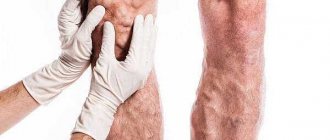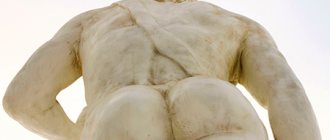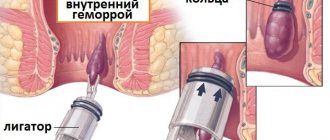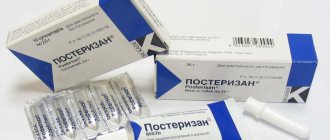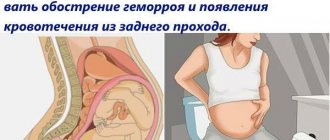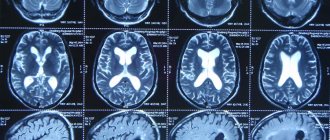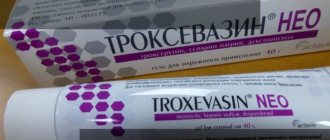For the most part, all diseases of the anus and rectum cause significant inconvenience to a person. And this suffering brings not only physical, but also psychological discomfort. Of course, pain, itching, burning in the anus, and bleeding in themselves are extremely unpleasant. But there is also psychological discomfort associated with the difficulties of solving the problem, the problems of discussing it, and the search for a specialist who can help. Often the problem is the fear of making the disease public, of “dishonoring” in the eyes of others.
This makes it difficult to solve the problem and puts it on the back burner. But, like any disease, diseases of the anus and rectum do not go away on their own. Small hemorrhoids become larger over time. And this time is different for everyone. An acute anal fissure turns into a chronic one, and surgery cannot be avoided. A small anal fringe grows, and the problem turns from an aesthetic one into a physical one - the fringe becomes inflamed and hurts. And so on. The list of such situations can be extended.
Any doctor knows many stories when a disease could be cured quite easily at the beginning of its development and required a lot of work between the doctor and the patient when it was advanced.
What do specialist proctologists do?
Doctors at 7th Heaven do everything necessary to solve problems associated with anal diseases before they go too far.
We in no way replace our activities with the work of proctology departments of hospitals! The diseases of many patients who did not receive timely treatment can only be cured in a hospital bed in the proctology department of a hospital. Not only does each disease have a specific treatment, but each stage of the disease must have its own treatment method!
There are no universal treatment methods! But the treatment method should not be more severe than the disease itself.
Let us dwell on some specific issues that concern our patients.
Non-steroidal drugs with anti-inflammatory action
They restore vascular damage, increase blood flow by reducing blood clotting, and relieve swelling. However, taking these pills for hemorrhoids is fraught with increased bleeding, so you should not take them without the recommendation of a proctologist and therapist.
Nitrate containing
The products are intended to relieve sphincter spasms. They act quickly and penetrate immediately into the blood. It is recommended to take orally under the tongue.
Phlebotonics (Bioflavonoids)
Detralex - has angioprotective and phlebotonic effects.
These drugs are created exclusively from plants, but they are no less effective than drugs from other groups. Among the indications for the use of bioflavonoids is the treatment of hemorrhoids. The drugs act on the walls of the affected vessels to relieve inflammation and stimulate regeneration, to strengthen the walls of the veins, and regulate blood outflow.
Treatment of hemorrhoids.
Almost every patient, when asked what worries him, simply answers: “Hemorrhoids.” And only upon further examination it turns out that he suffers not only from hemorrhoids, but also from other diseases. However, by and large, our patients are right. They have hemorrhoids! Unfortunately, 80 - 90% of patients who go to the doctor with complaints related to the anus have hemorrhoids.
However! Hemorrhoids in themselves may not bother the patient, but create an unhealthy background against which other diseases appear: anal fissures, inflammatory processes of various formations of the anus, the growth of anal fimbriae and others. It is very rare that any disease of the anal canal is not combined with hemorrhoids, even small ones.
And now about hemorrhoids specifically.
Primary complaints during the development of the disease, which the patient often does not pay attention to: discomfort in the anus, aggravated by prolonged sitting; feeling of incomplete evacuation after bowel movement. And often that's all! But even with small hemorrhoids (and as the nodes grow, more and more often), bleeding may appear during or after bowel movements. However, this sign of illness does not always occur. There are patients whose hemorrhoids begin to fall out, but there is no bleeding. The prolapsed nodes are first straightened on their own, then they are set by hand, they use all sorts of tricks to make it less worrying, but they don’t want to be treated! People, what are you doing to yourselves? Have pity on yourself! Treating a disease is not worth the suffering you cause to yourself.
Hemorrhoids are cured, not “healed”, as is the common misconception. But here it is important to understand what the hemorrhoid itself, the disease itself, is.
Hemorrhoids are an already existing (usually ongoing) expansion of the cavernous bodies of the rectum. To put it simply – varicose veins. Only these veins are somewhat different from the veins in other parts of the body. And this disease is akin to varicose veins of the legs.
My dear patients, have you seen anyone with varicose veins on their legs? I'm sure they saw it. So stick candles to these veins with a plaster on one leg, and smear the other leg with ointments and feed the patient with pills. Do this for 10 days (usually there are 10 candles in a package). And look - will these veins disappear? Haven't disappeared? Do not want?
So why should hemorrhoids disappear after using suppositories (ointments, tablets)? Even if you are being treated not for 10, but for all 30 days. And he’s not going anywhere! So don't fool yourself. It is impossible to eliminate with medications what has already happened in the past (varicose hemorrhoidal venous plexus)!
Hemorrhoids can only be cured by removing the hemorrhoids themselves. True, there is one caveat here - either by reducing the blood flow to the nodes (there are also such treatment methods).
“So why are all these drugs sold in pharmacies?” - you ask. Either you, doctor, are lying, or they are fooling us there?
And they don’t lie and they don’t make a fool!
All these remedies are needed to treat complications of hemorrhoids or diseases associated with it. Uncomplicated hemorrhoids do not hurt! Blood from the nodes may flow in a stream, but there is no pain. But when pain appears, it is either the nodes begin to fall out (but the pain is not severe), or the external node becomes thrombosed and inflamed (internal nodes rarely thrombose), or some other sore has visited you.
So what, in the end, do we do with all these nodes, internal and external?
We remove them, and thereby relieve you of hemorrhoids!
We ligate the internal nodes - we remove them by tying the tissues of the node with special rubber rings. After this procedure, the node falls off, most often after 2-3 days. The wound that forms at the site of the rejected node heals in about 3 weeks. And until it heals completely, the patient must follow certain rules: avoid alcoholic beverages, do not lift heavy objects, do not use drugs that reduce blood clotting, and avoid exposure to high temperatures. There are also some other requirements, but they are selected individually for each patient.
“And what else?” - you ask. We also use sclerotherapy for hemorrhoids. That is, the introduction of a special substance into the tissue of the node, which causes “gluing” of the vessels in the node. After this procedure, the node decreases in volume and blood flow stops.
However, the treatment method is chosen not by the patient, but by the doctor. The doctor always acts in the interests of the patient and knows in which situation which specific treatment method is best to use.
The treatment methods listed above only apply to internal hemorrhoids.
What's outside? And we remove it from the outside. We just delete it differently. Internal hemorrhoids do not have pain sensory nerve fibers. And the outside ones have, and a lot of them. Therefore, other treatment methods have been developed externally. And this treatment is carried out under local anesthesia with painkillers - novocaine, lidocaine, ultracaine. These drugs are given by injection (shot) into the site of the node. That is, in the anus area. This is the most sensitive, most painful part of the procedure.
And then the node (or fimbria) is removed using the Surgitron device, which separates the tissue using radio waves. If the wound after removal of the node is large, we sutured it, otherwise it may take a long time to heal.
“Excuse me! Operations? How is it in the hospital? - you ask.
But it’s not like being in a hospital! Yes, a small operation. But it’s small. The wound after it is usually no more than 1 - 2 centimeters and therefore does not bother much and is anesthetized with ordinary tablets. And sometimes patients don’t even take painkillers. Yes! It happens. And not that rare.
That's all. And you don’t have hemorrhoids!
Of course, not everything is so simple; there are many details, features of the disease that are different for everyone. My dear patients, you are all very different from each other.
As you already understand, it is a rare patient of a proctologist who does not suffer from hemorrhoids. However, patients also come with other complaints.
For example, very often patients complain of pain during and after bowel movements. This pain can vary in strength - from minor and short-term, to very severe, lasting many hours. There are many other features of the pain syndrome.
What diseases cause pain?
Most often, pain accompanies anal fissure and inflammation of various anatomical structures of the anal canal.
I warn patients right away! If pain in the anus occurs acutely, for the first time, suddenly, increases quickly - over hours, days - is accompanied by an increase in temperature (especially above 37.5 degrees) - consult a doctor immediately! If your general condition worsens, the pain is such that it’s hard to even sit, call an ambulance. It is very likely that hospitalization in the proctology department (or surgery) and emergency medical care are necessary.
A similar condition can be caused by acute paraproctitis, a disease accompanied by acute purulent inflammation of the fatty tissue surrounding the rectum. If you seek help late, this disease can cause great trouble.
But let's return to the anal fissure. How else, besides pain, can it manifest itself? Often - nothing. However, there may be such symptoms as a burning sensation, slight bleeding after bowel movements. Other complaints are much less common.
Content
- Inflammation of hemorrhoids
- External hemorrhoids in women after childbirth
- Postpartum hemorrhoids - causes and symptoms
- Effective treatment
- Is it possible to treat hemorrhoids after childbirth at home?
- What to do if you have inflammation of hemorrhoids during pregnancy and after?
I recently published on the website medklinik.by and in my telegram channel “Doctor Treats” an article “Pregnancy and hemorrhoids: new approaches to treatment.” The article provides detailed recommendations from a proctologist for women planning a pregnancy. These recommendations are based on many years of practice and have benefited many of my patients.
What is this anal fissure? How to deal with it? How is it dangerous?
To better understand the essence of the disease and how to treat it, we will take a short excursion into the anatomy of this area.
If we mentally examine the anus (anus) from the outside, we will see folds of skin radially converging towards the center. Nothing else! Anything else you might find shouldn't be there.
The anus is compressed by a muscle called the sphincter. Then the anal canal goes about 2-2.5 centimeters deep, covered with almost the same skin as the surface of the body. Only this skin is thinner and without hairs. It's called anoderm. The anal canal is one of the most sensitive places in our body.
Then the anal papillae are located deeper - small, papilloma-like formations. Their size ranges from 1-2 to 5-8 millimeters. And immediately behind them is the internal hemorrhoidal venous plexus, from which internal hemorrhoids are formed.
So, an anal fissure is a rupture of the skin (anoderma) inside the anal canal at a depth of 2-2.5 centimeters.
The sizes of anal fissures vary - from 5-6 millimeters to 2 centimeters. Of course, the larger the crack, the more it bothers its owner.
However, the “cute” thing about fissures is that small, sharp (i.e., fresh) anal fissures often don’t hurt. The pain appears after several weeks, or even months. During this time, the crack becomes chronic and the patient cannot cope with it on his own.
What is the cause of anal fissures? The most common is dense feces. Not even constipation! A small crack that causes slight discomfort after stool is the most typical onset of the disease. Unpleasant sensations quickly pass without drawing attention to themselves. But the crack remains! At this time, treatment is most relevant and effective. But who is being treated at this time?
How to treat?
The main principle of treating anal fissures is to achieve soft, non-traumatic stools. Often this factor alone is enough for the crack to heal. Various drugs that promote accelerated wound healing are very appropriate here.
“Why don’t you give ready-made recipes, doctor? You beat around the bush,” you say.
Yes, because, my dear patients, I am a categorical opponent of self-medication! By diagnosing yourself and prescribing treatment, you can reach a sad ending! At the same time, almost any disease detected at the beginning of its development is often treated quite simply and thoroughly.
As an example from life, I can tell you about an incident in a pharmacy. And you yourself, most likely, have encountered similar situations, and maybe participated in them.
I stood in a small line at the pharmacy. In front of me, a guy, about 25 years old, was literally extorting an ointment for “sores” from a male pharmacist. To the pharmacist’s credit, he resisted quite a bit, not wanting to sell the guy anything. I sent this patient to a dermatologist, citing the fact that sores can be very different. Of course, after all, a “sore” is a mosquito bite, an allergy, and syphilis - it also manifests itself as a rash! What kind of ointment is this?
Why am I writing this? And just so you know, there are different “sores”, including in the anus. Often they present with exactly the same symptoms, but are treated completely differently!
Well, have you taken a break from medicine? Now let's go back to the crack. To the form that is most often encountered at a proctologist’s appointment – chronic anal fissure. Unfortunately, untreated acute anal fissure eventually becomes chronic. And this time can vary from 1-2 to 3-4 months or more.
What are the features of chronic anal fissure?
- First of all, persistent pain that persists after stool from several minutes to several hours. This pain can be very severe and difficult to treat. It mostly goes away on its own over time until the next bowel movement, when it resumes again.
- The next difference is that the sphincter (the muscle that compresses the anus) contracts strongly - it goes into spasms. As a result of the spasm, the pain intensifies, conservative treatment becomes almost hopeless. Time has passed.
- Another very important feature of chronic cracks is the formation of scars along the edges (the body tries to heal the crack). These scars are another obstacle to treatment. With massive scars, the crack does not heal on its own; they must be removed.
- And finally, another feature of chronic anal fissure is the formation of sentinel tubercles (skin outgrowths similar to papillae). They come in different sizes - from a few millimeters to 1-2 centimeters and are located at the inner and outer edges of the anal fissure.
All these factors, individually or all together, make up the chronic anal fissure complex. Such a crack almost never heals with conservative (medicinal) treatment, even very carefully selected ones.
Imagine, the crack is only 1–2 centimeters, such a small sore, but how many important features it has!


